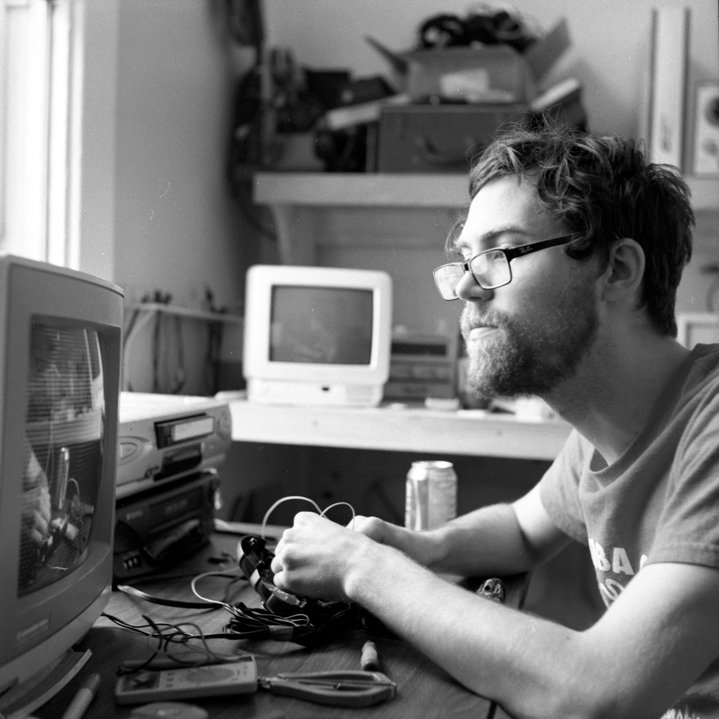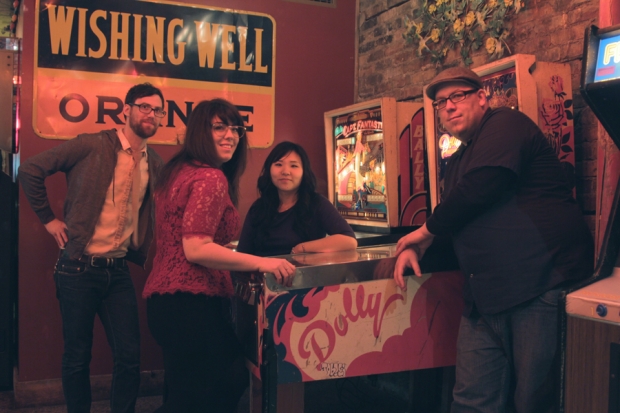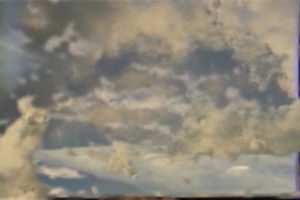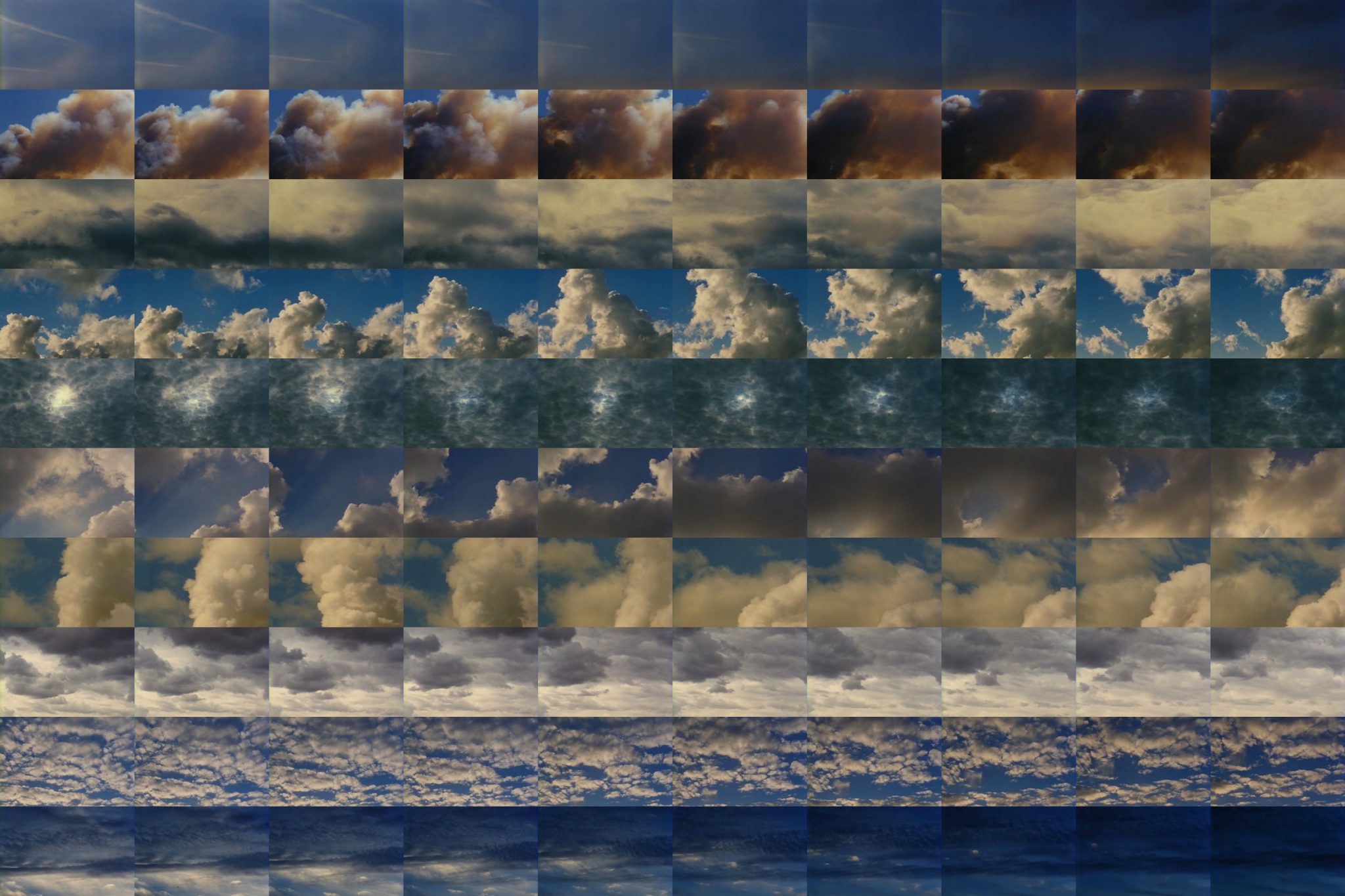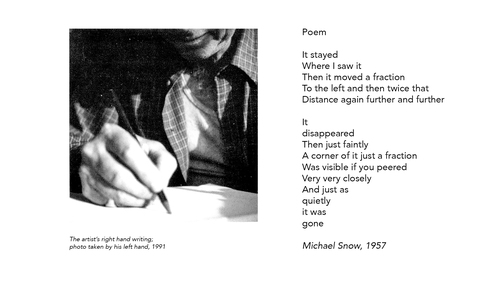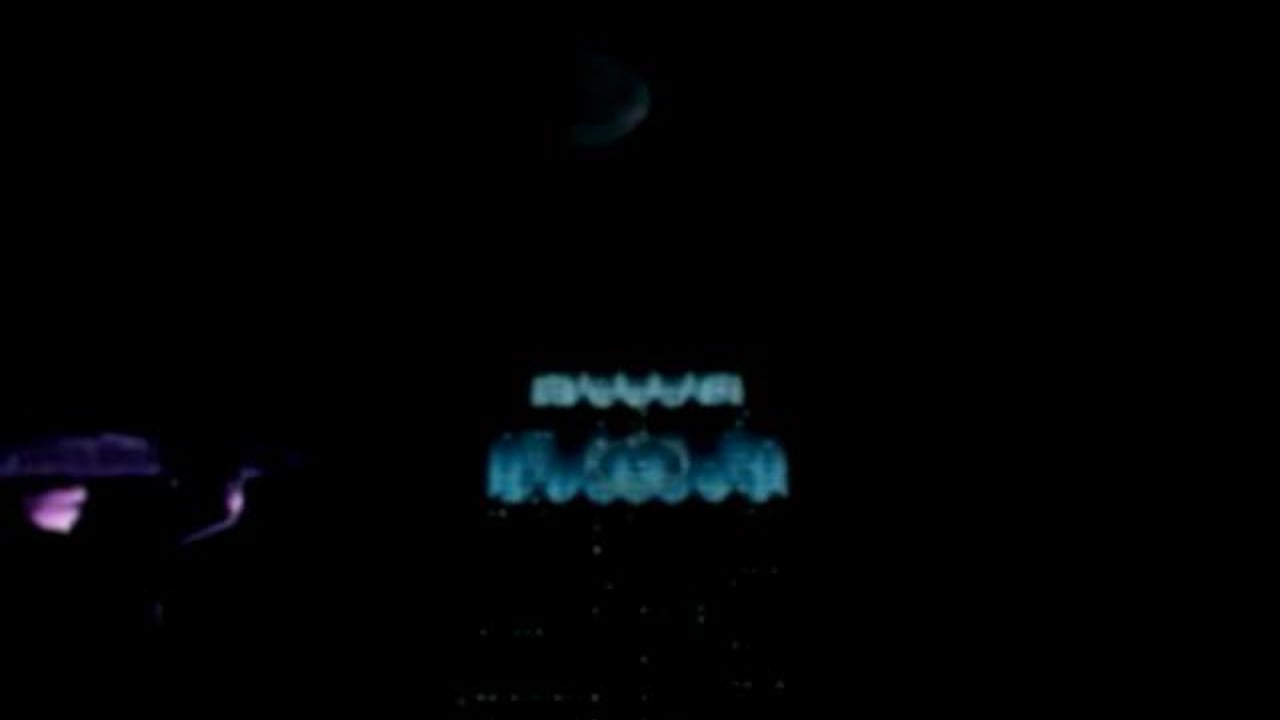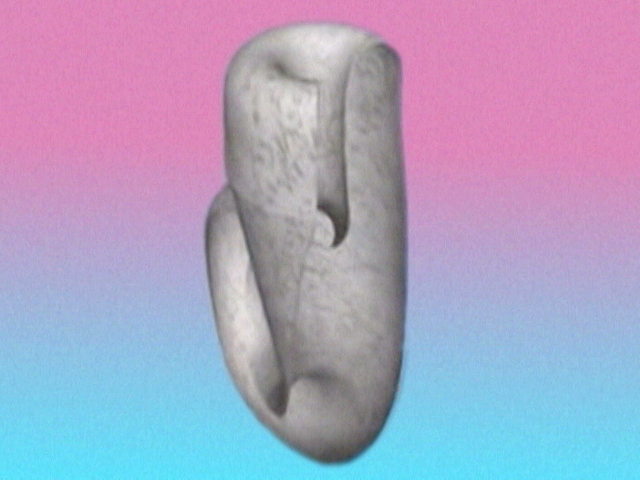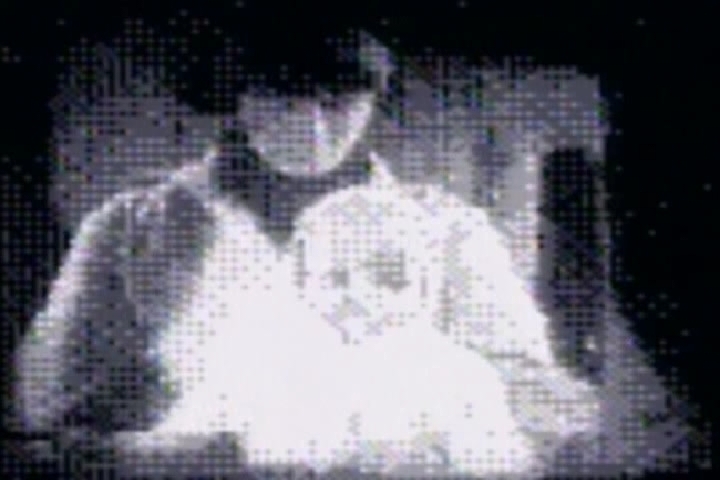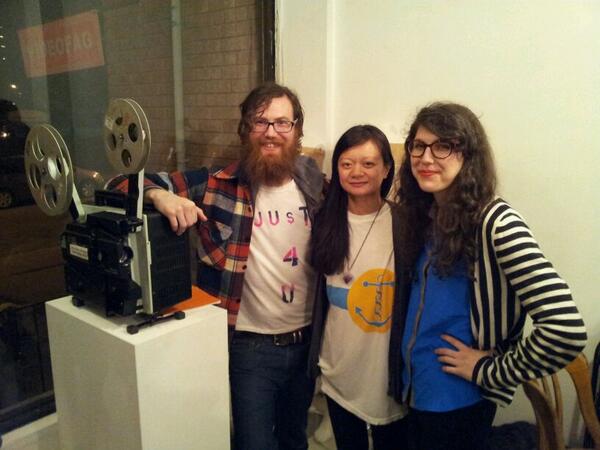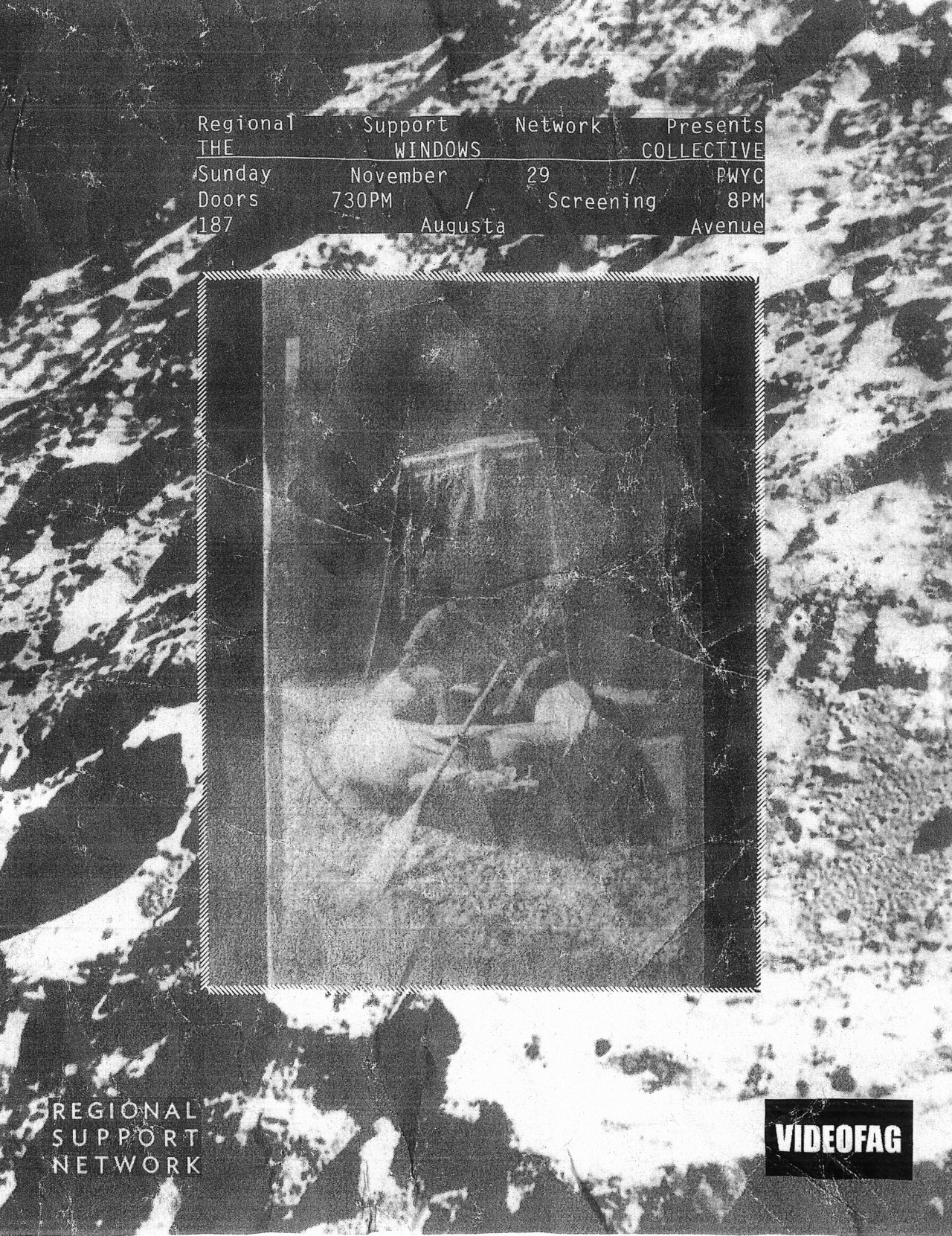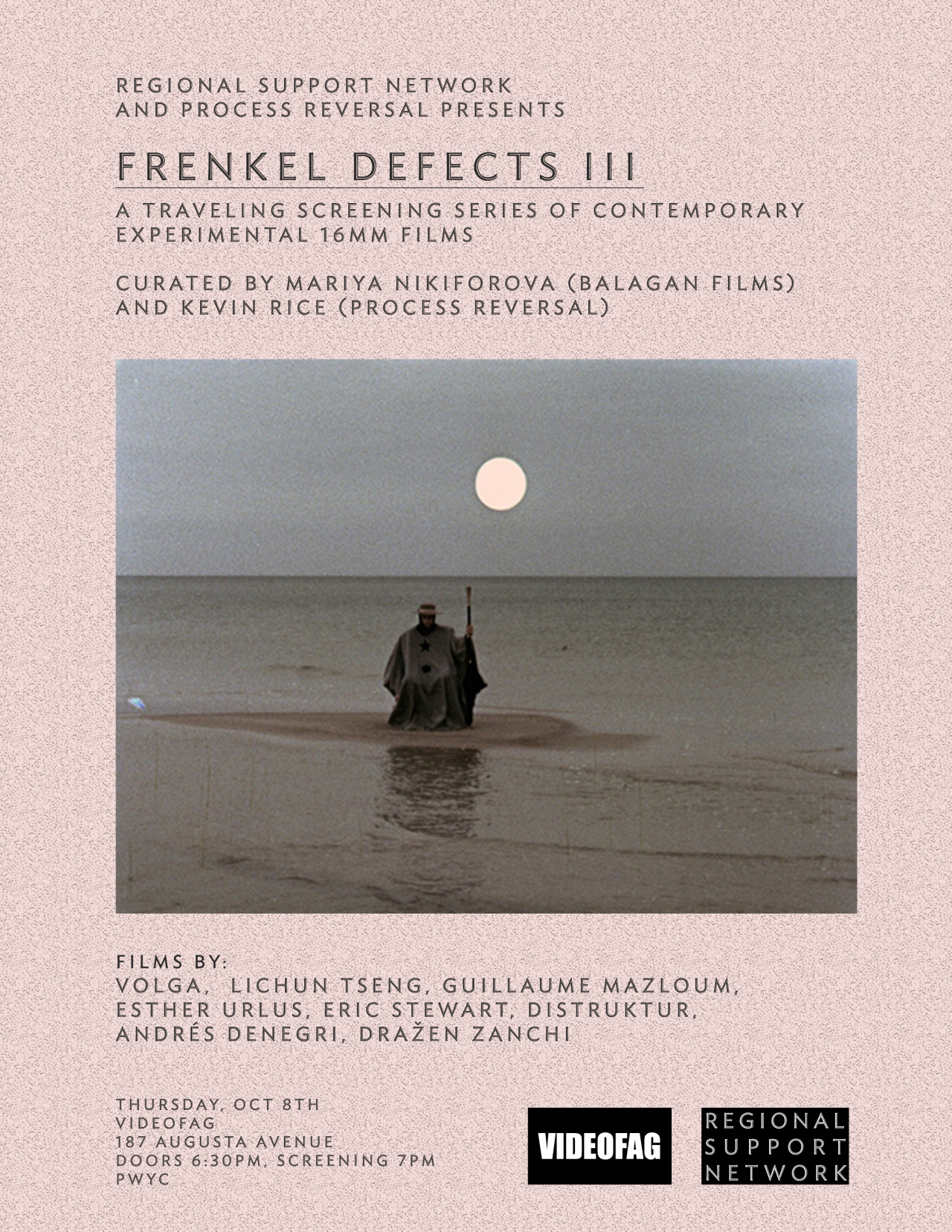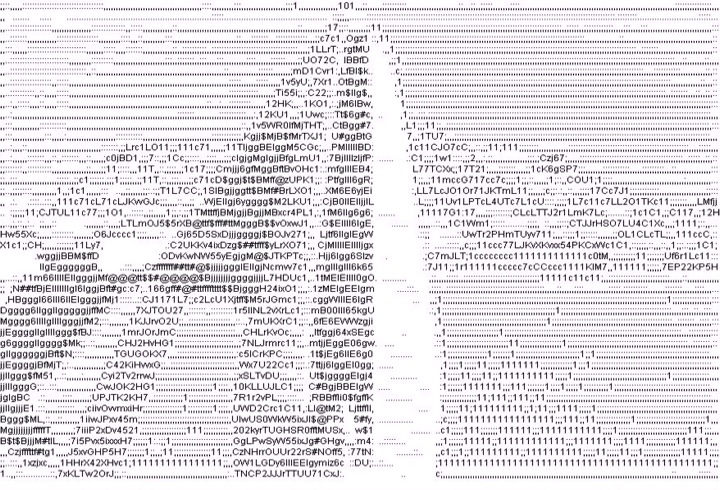Bending Circuits: An Interview with Clint Enns
(revised June 2017)
Mike Hoolboom: I’ve been having a chitchat with artist-run centre mainstay Clive Robertson who insists there is no such thing as an art community, not even as an inconvenient fiction. It made me wonder: what is a community made of? You seem engaged with both the spirit and flesh of community and I was wondering if you could weigh in on this matter. And if you might spare a few words about the difference between your former home in Winnipeg, and the new fringe palaces of Toronto?
Clint Enns: It seems the term “community” is contentious for artists of Robertson’s generation, and it would be interesting to find out why. For instance, Andy James Paterson is also reluctant to use the term “community” because he believes it implies exclusivity. To me, it isn’t about who is in or out, but who is around and interested. The more the merrier, rather than the select few. The experimental film community consists of those who are participating and engaging with experimental film practices. You don’t choose who is part of your community, you are united by a common passion.
The Winnipeg artistic community is really supportive of each either, but this hasn’t always been the case. This is something that was nurtured through hard work, dialogue and creative problem solving. Of course, there will always be personal and political conflicts since everyone involved is passionate, but this hopefully contributes to the community’s continual evolution.
It seems that a common complaint among Toronto filmmakers is the lack of institutional support for local filmmakers. Of course, this is compounded with the economic reality of living in Toronto. It is very difficult for filmmakers to be recognized by Toronto institutions (even those that are artist-run) and this fosters animosity towards these institutions among artists. Toronto artists are pressured to compete with international work, making it difficult for locals to develop a distinctive voice since “quality” is determined by local curators with “sophisticated” tastes or curatorial “vision.” Ironically, many filmmakers who successfully compete internationally have difficulty screening in Toronto. I think that it is possible to support local filmmakers while maintaining an international reputation. Consider the success of Videofag, an artist-run space that has garnered an international reputation simply by supporting the community and its needs! Integrity and generosity go a long way!
Mike: The versions of community you describe seem to have a competitive element in them, along with Toronto’s soaring real estate prices, the price of exhibition space seems to be rising alongside. You’ve recently finished a commissioned work that includes Michael Snow’s poetry. Do you see the relationship between yourself and an older, more established artist like Michael in Oedipal terms (kill the father!)? Do older artists need to step aside to make space for younger artists like yourself? Do you think the field of fringe movies is too beholden to golden bygone eras or heroic figures (white male Americans)? I recall you recirculating an early piece of James Benning that seemed aimed in this direction as well…
Clint: I think friendly and supportive competition is productive. Once again, what seems to be lacking is institutional support.
I love the work of Snow and Benning, but still feel the canon is culturally oppressive. I want to engage with the canon, but also to critique and re-think it. I often feel the urge to kill my idols… these are attempts to re-evaluate my own cultural biases. By cultural biases, I mean my own standards of “quality” or “taste.” I like a vast spectrum of work, but the work that I enjoy the most attempts to engage the audience and is innovative, strange, psychedelic, challenging, made out of love, personal, eccentric, and enlightening. It allows my mind to wander after the screening, or encourages me to see the world in a new light.
I have re-made/re-realized James Benning’s film Ten Skies (98 minutes 2004) in two different ways (after all, couldn’t it be seen as a score?). Benning’s Ten Skies consists of ten static shots of skies, each ten minutes in length. My first remake Ten Skies (2.5 minutes 2012) condenses all ten skies into one sky through chroma-keying, in essence, removing the sky and removing any reason for the film’s existence as Shahbaz Khayambashi has pointed out.
“Clint Enns transgresses – disrupts – the medium of cinema iconoclastically by appropriating, recontextualizing, and re-presenting the works of others. In doing so, he attacks and tears down every aspect of the moving image, including, but not limited to, the form, the content, the material, the respected and established practitioners and, even in one case, the very act of seeing itself. After a screening of one of his films, a viewer claimed that ‘there is nothing left for the cinema to say; cinema is dead and Clint Enns has killed it.’” (Program notes for a Clint retro by Shahbaz Khayambashi)
I also made Ten X Ten Skies, a 100 frame grid of frame enlargements from Ten Skies where each horizontal line represents ten minutes of Benning’s film. The result is ten lines of still frames capturing all ten of Benning’s skies. Ten Skies was made as an homage/attack on the established canon, it was intended as a polemical film to raise the question: Are canonical films fair use as found footage? Ten X Ten Skies was part of a larger investigation that explored the following questions: What happens when cinema is reduced to a series of stills? What is cinema without time? What lies in the boundary between the photographic and the cinematic?
The other remake Gleem (2 minutes 2010) was a remake of a lost Benning film of the same name. The original is an optically printed film that interweaves two short sequences of tooth brushing on odd number frames and a close-up of a penis ejaculating on even number frames. Something tells me that this film’s loss was intentional. This film was re-made for Guy Maddin’s Hauntings, a project intended to remake lost, unrealized or aborted films. I sent the film to a few festivals under Benning’s name as an art prank and one of them accepted it, only to reject it once they realized it wasn’t actually a Benning film (this happened over e-mail. They wrote that they had originally made a mistake and the film should have been rejected). In hindsight, this gesture was a kind of self-fulfilling prophesy since, of course the festival would reject it once they realized they had been had. I originally thought it was a clever institutional critique of celebrity status within the experimental film community, which of course happens all the time. In fact, because of this, I think the quality of work has been in decline for years, since many filmmakers seem to make work to satisfy the institution (festivals like New York’s Views from the Avant-Garde or Toronto’s Wavelengths, or galleries like MOMA or the Tate) as opposed to following their own vision/developing their own voice.
I think artists should attempt to work outside of the established approaches and strategies, and should avoid simply mimicking established modes of experimental film production. Though established modes are easier to recognize as “good” to those with sophisticated tastes since there is usually decades of scholarship and literature devoted to better understanding them.
Mike: Your caught-in-a-trap sentiments appear echoed in your recent Video/Poem (6 minutes 2015). In one version, you had fellow fringe media artist Leslie Supnet reciting Snow’s 1957 Poem, a fifteen line bonbon that describes something moving (attention?)
You follow this with a shot that is difficult to gestalt into shape at first, but slowly it reveals itself as a rat’s lab cage, which you replay with frames inside of frames, a formal echo of the house of mirrors in which this lab specimen is condemned to live the rest of their life. I think you’re suggesting that Mike’s interest in media containers condemns him to a sterile exploration of constructed environments, that he’s built a sort of trap for himself, though at the same time you’re reveling in the formal beauty of it, the satisfying rigour of a single idea playing itself out.
Clint: A better reading might be that the mirrors represent the sterile institution (in which we are trapped), but this might be getting too symbolic. For the project, I was asked to remove Leslie’s voice since John (Price) and Mark (Templeton) asked Snow to read the poem, but he declined mentioning that he thought it looked better on paper. The voice will remain if the film is shown outside of the context of this project. I really like how Leslie read…it…line…by…line…
I thought about the poem a few different ways. At first, I thought of it as self-reflective given its title, but then I thought, if one reads it literally, one might assume it is about a mouse. Hence, a mouse in a house of mirrors! Like all of my contemporary “re-makes,” the goal was to look at the work the work through a contemporary lens that is both celebratory and critical. I shot the film at North York Pet & Animal Control, a play on Snow’s New York Ear & Eye Control (34 minutes 1964).
In the film, I gave Snow a female voice which was also intended as gesture, that is, suggesting opening up the (still!!!) male dominated avant-garde to the female voice. I also thought it was telling that I was asked to remove it.
I want to be clear though, none of my works that are critical of the canon or poke fun at the avant-garde are intended to be attacks of individual practices. The canon is oppressive not because of the individual filmmakers, but because of the structure of the institutions. On the other hand, filmmaking is a medium that is inherently constrained by the frame, but within that frame there is often beauty or insight to be discovered. Unfortunately, the institution likes to re-enforce what it already knows, perhaps producing a hall of mirrors.
Mike: You’ve remade Dutch conceptualist heartthrob Bas Jan Ader’s 3 minute video cry, I’m Too Sad To Tell You(1971), adding digital tears. Critics often cite the tension between his crying which seems so real, and the fact that this is a performance after all. I guess you’ve come down on the side of performance. Are those old lights too bright and need to be dimmed down a notch, poked and played with, made fun of even? Are ridicule and satire another form of flattery? Why the revisit?
Clint: Augmented reality is when real physical environments are enhanced by computer-generated sensory input including, sound, data, video, etc. Think Google Glasses. I was (jokingly) intending to emotionally enhance Bas Jan Ader’s performance by using an early form of augmented reality that added computer generated hats, tears, hearts, etc. to webcam feeds raising questions about augmented reality’s ability to augment spiritual or emotional qualities. It was made for a class in which augmented reality was considered the future of cinema! The work satirically poses the question: can augmented reality be used to emotionally enhance an artwork? Of course, Ader’s film is already perfect!
Mike: Forgive me for quoting in an interview, it seems that both your work and mine are haunted by quotations. Here is a riff from French genius Catherine Malabou:
“The issue of ‘following’ constitutes one of the leading threads of Derrida’s book The Post Card. In this book, Derrida undermines the classical order of filiation: first comes the father, then the son or the daughter. He undermines this order and shows that ‘to follow’ may sometimes (or perhaps always) means ‘to precede.’ He writes, “Let us think of this extraordinary postcard showing Socrates writing under Plato’s dictation: ‘I have not yet recovered from this revelatory catastrophe: Plato behind Socrates. Me, I always knew it, and they did too, those two I mean. What a couple. Socrates turns his back to Plato, who has made him write whatever he wanted while pretending to receive it from him.’”
Apart from riffs on movie dads Snow, Benning and Ader there are a few other iconic avant favorites that you’ve replayed, including works by Andy Warhol, Hans Richter, and Chris Burden. At the risk of asking you to do too much of the heavy lifting, I wonder if you might run down each of these projects, offering a descript and a rationale. Could you would you?
Clint: With Softly Through the Night (1.5 minutes 2010) I was attempting to re-imagine Burden’s Through the Night Softly in an era of Johnny Knoxville, that is, to soften the work… make it less extreme. Ironically, after performing the video, I got a near fatal rash and spent half a week in hospital! In 747 (1 minute 2011), I was attempting to explore the artistic gesture in game space by re-performing Chris Burden’s 747 (performance 1973). By shooting at the plane in real life, Burden assumed he wouldn’t hit it, hence, it was the gesture that is significant. In game space, this same gesture changes, that is, we now expect the plane to blow-up or burst into flames… in this case, nothing happens. I also re-shot Warhol’s Empire (485 minutes 1968) in Grand Theft Auto 4, using the same framing as the original. The video is called Rotterdam Tower, the name of the fictional tower in Grand Theft Auto IV is based upon New York City’s Empire State Building. Warhol’s Empire was filmed on the night of July 25-26 from 8:06 PM to 2:42 AM. It was shot at 24 frames per second but is projected at 16 frames per second extending the 6 hours and 36 minutes of footage to 8 hours and 5 minutes. Abridged showings of Empire were never allowed, and supposedly its unwatchability is an important part of the film.
In my version Rotterdam Tower (14 minutes 2011) was shot from 8:06 PM to 2:42 AM Liberty City time and slowed down making it 14 minutes and 28 seconds. Empire‘s unwatchablity is the primary reason I felt compelled to re-make it. This is a re-make of a film that was intended to be unwatchable. In addition, this video is also intended as a commentary on the condensed time found in Grand Theft Auto IV. In other words, to a generation raised on video games and YouTube videos, 14 minutes feels like 8 hours! Of course, my video was intended for online consumption and like Warhol’s film, it was intended to be watched in its entirety.
Phil Solomon made a similar re-make, but his is from a different angle, in full HD, intended to be seen in a gallery, and lasts 24 hours in game time (48 minutes in our time). He seemed really mad when he heard about my version, however, we determined that mine was probably made before his. Nevertheless, what does he have to be mad about? His version has generated much more writing than my video, including a review by Chris Stults and an essay by Nicky Hamlyn. When I contacted him, I was hoping we could talk about putting together an Empire-themed exhibition (because I am pretty sure there are other clever re-makes), but before I could get around to asking him he was already threatening to sue me!
I have also made a few other re-makes of Empire. One of them is Simpson’s Empire (loop, 2011) created by looping a scene of Bart and Milhouse watching Empire on their iPhone and the other is Gameboy Empire (loop, 2011), a Gameboy cartridge allowing the true Warhol enthusiast to experience Warhol’s Empire anywhere on their portable entertainment system!
Rhythmus 25 (1.5 minutes 2010), a remake of the Hans Richter film was also made for Guy Maddin’s Haunting’sproject. This is when I started attempting contemporary re-makes of canonized experimental films. I should say that I view these works as a small part of my artistic output.
Mike: A Knight’s Walk feels like the movie that Frampton would have made had he survived Magellan. It’s a witty formalist’s trek. You open by showing a knight moving across every square on a chessboard, and then take us, via an extended bravura shot, with the camera attached to a shopping cart, into a supermarket derailed by an anti-shopper who we follow as he casually redistributes a few labels and items, as if this space could be used for something else. After a cartoonish horse race, you winningly clip a scene out of Ferris Bueller’s Day Off (1986) that shows a man (named Cam, as if he had swallowed the machine) becoming the Impressionist painting he is looking at, dissolving into pixels. You close with a computer-generated rendering of the mysterious Klein bottle. Can you talk about how this movie came about, and how the sections relate to one another?
Clint: I made a few Greimas squares a while ago inspired by Rosalind Krauss. In “Sculpture in the Expanded Field” Rosalind Krauss attempted to use a Greimas square, a tool used in structural analysis to expand the relationships between semiotic signs by examining opposing concepts. This type of semantic square is a semiotician’s adaptation of a mathematical object referred to as a Klein four-group. By using a Greimas square, Krauss was attempting to lay out the structural parameters of sculpture, architecture, and landscape art, in other words, to clarify these art practices by exploring what they were, what they were not, and what would happen if they were logically combined. In the experimental film world, there are some people who are obsessed with medium specificity, however, these debates seem dated and boring to me. Unfortunately, I do not feel the terms of our discourse are in opposition: a pixel is not the opposite of a film grain (point), nor is something that is moving and not-film necessarily video. With that in mind, many experimental film purists (even in 2017!!!) reject video as a valid medium. From point to pixel: video art in the expanded field.
A Knight’s Walk is intended to raise questions about the spaces we inhabit and how we navigate these spaces, both the spaces in which we live, as well as cinematic and digital spaces. As observed, the work begins with a knight moving across every square on a chessboard following a closed knight’s walk where each square is visited exactly once and the walk ends where it begins. Through this gesture the knight, following the rules, traverses the game space, namely the chessboard. In the next section, my friend Chance navigates the supermarket by chance, violating the social rules of space. The horse race is from an old Atari 2600 game called Steeplechase, it’s a game in which there are very limited ways to move through the space… you move forward attempting to jump over obstacles. Despite this, the game is actually quite fun! In the next scene, Cam is looking at Seurat’s neo-Impressionist painting A Sunday Afternoon on the Island of La Grande Jatte. As he looks at the image (in Ferris Bueller’s Day Off), it reveals (painter Georges) Seurat’s use of pointillism. When watching Ferris Bueller’s Day Off on lazy Sunday afternoons growing up (the movie, like other John Hughes flicks, was often shown on TV Sunday afternoons), I always wanted Cam’s image to break down to reveal his own filmic construction while looking at Seurat’s painting. Also, given the hybrid nature of contemporary filmmaking, I was attempting to question the binary between film and video.
Finally, the last scene explores a Klein bottle. It was a bit of a math joke… since Krauss used a Klein group diagram for her article “Sculpture in the Expanded Field”…video art in the expanded field. The Klein bottle is a mathematical object that can only be properly represented in 4 dimensions. Of course, a three dimensional representation exists but it’s imperfect since the Klein bottle is not self-intersecting. Like the Möbius strip, the Klein bottle is an example of a non-orientable surface. In addition, it is possible that the universe is shaped like a Klein bottle. Finally, I was playing with the fact that most cinema is 2D… so the 4D Klein bottle was a 3D computer graphic shown in 2D.
Mike: There is a nostalgic haze to Summer Song (5 minutes 2015), is it the out of date colour super 8 or Coney Island itself that feels like the distant past? It’s a diary number, sometimes cut in camera, so the events show up as they catch your eye, which is drawn in the protracted midsection to the machinery of escape, the carnival rides that bear its riders away. Brief glimpses of your Leslie companion are threaded through the text, as if you were saying good-bye to the happiness promised by these getaways, first to life on the island, and then Niagara Falls. Your description mentions “Mia’s last breath.” Who is Mia? What is the Mermaid Parade? Can you talk about the movie’s structure, and how you constructed the soundtrack?
Clint: The film is shown silent on super 8 and with a soundtrack when it’s projected as a digital file. The film was shot on expired super 8, so it has that nostalgic haze. The frame by frame sections at the beginning were shot by Leslie, although there are also some shots of her since we were passing the camera around. The Mermaid Parade is a trashy parade that happens on Coney Island at the beginning of the summer season. I shot the rest of the film and it was edited around the shots of the Falls. This was the first time I saw the Falls… magnificent! The rides are also surrounded by the image of the grim reaper. The power of falls seems eternal.
Mia was our cat that passed away. In the film, I shot her minutes before we took her to the vet to have her put down. She wasn’t eating anymore and wouldn’t move. In the film, there is a shot of her trying to wag her tail, but without enough energy to make it happen. It is a bittersweet moment, knowing she was happy before she passed. In the super 8 version there are two more shots of Mia that I took out of the digital version since it was out of focus (it didn’t transfer well) and it is too much for me to watch. Mia was also the end of my relationship with Leslie, the last thing from the past holding us together.
The film is structured around the contrast between passing moments and the seemly eternal nature of the Falls. The music was made using a guitar and banjo track that was slowed down. In addition, there are a few drones created by slowing down cymbals and a tape recording of my apartment which is featured visually.
Mike: In September 2014 you published a sort of question manifesto, aimed at fringe movie curators.
“Are you taking enough chances? If you had to choose, which would you rather be: rigorous, or risky? Would you characterize your taste as specific or diverse? Do you pride yourself on challenging your audience? How do you challenge your own boundaries and limitations? How much of an obligation do you have to the audience? Do you have an obligation to foster an audience? Have you provided your audience with proper program notes? Are you guilty of ArtSpeak? Do you view yourself as an authority figure? Why or why not? Are you more worried about your own career than you are about opening the door for emerging artists who show potential? Do you have “good” taste? What does this mean? What is your obligation to canonized experimental film and video artists? What is your obligation to your local experimental film and video community? Do you consider yourself a member of your local experimental film and video community? Do they consider you a member? Do you feel you have any obligation to fostering a local scene? Do you consider yourself a conservative programmer? Does this promote a conservative experimental film and video scene? Is this an oxymoron? Has the avant-garde become conservative? Is fun only reserved for after the screening has finished? Do you reject “outstanding” work when it doesn’t fit your curatorial concept? Do you attempt to find a place for this work? Are the artists being paid? Are you being paid?”
Could you talk about your own work as a curator of an ongoing series at called Regional Support Network? It feels like a reaction shot to the prevailing fringe movie curating practices here in Toronto. And how would you respond to some of your own questions?
Clint: I don’t think it is possible that any curator could answer these questions without contradiction. Once again, it is a polemic and not intended to be answered… a manifesto. Regional Support Network is an experimental film series run by Leslie Supnet and myself. We do not curate, we invite others to curate eliminating the Toronto curatorial lens, but (of course) we often break our own rules. It was intended as an opportunity to see a diverse cross-section of work. We encourage the audience to ask why this type of work is being made, or what is the work symptomatic of, instead of whether the work is good or not. Also, we do not watch the programs before we screen them.
The idea came out of a discussion with scholar and curator Eli Horwatt, and is an attempt to bring work from different regions, cultures and communities to Toronto. The first screening was March 18, 2014 and featured films from Baltimore programed by Kate Ewald, Lorenzo Gattorna and Meg Rorison of Sight Unseen. The programs aren’t intended to be a greatest hits compilation, they are intended to present a cross-section of the work currently being produced from the perspective of artists that are engaging with their community.
The programs happen organically. Sometimes we invite people from curatorial collectives in other cities, other times artists are visiting Toronto on LIFT residencies and we simply ask them if they want to curate a program of work for us. For instance, Mary Stark and later Dirk de Bruyn were in town for LIFT residencies and we asked them if they were interested in showing work from their communities. I met Mike Stoltz when he stayed with me as part of TIFF (Toronto International Film Festival). During that time, I decided to do an interview with him and asked him to program a selection of work from Los Angeles.
People sometimes contact us asking to do an event and we will do our best to accommodate them (or if it doesn’t fit our mandate, direct them to other screening series in the city). Amber Christensen is a friend of mine who asked to do a program of work from Saskatchewan. She is now living in Toronto, so we break our own rules on occasion! Many of our ideas about critical regions have came from conversations with Amber. For instance, RSN argues for a critical and fluid form of relational regionalism and argues that there are often distinctive local characteristics to be found in the work from one region since the work is implicitly informed by the artists’ perception of and identification with their sense of place. We are not implying an aesthetic consistency to the work, however, we do believe that one’s own community, dialogues within the community and physical landscape inevitably, at the very least subconsciously, inform one’s artistic practice. With that in mind, we are always interested in people contacting us about screenings!
The response and audience has been different screening to screening. We try to keep it unprofessional and encourage people to support the space by buying drinks (we always have a brief intermission, which is good and bad, but feel it is important for the space). We also provide program notes and whenever possible we attempt to project at least one or two works on super 8 or 16mm. We have currently presented Regional Support Network in two spaces, at VideoFag and at the Drake Hotel. At the Drake, the programs reach an entirely different audience than the regular film crowd. Rea McNamara at the Drake is extremely interested in community outreach and in bridging gaps between different communities. VideoFag is our regular venue. I love Jordan and Will! Community building can (dare I say should) be inclusive. It isn’t about the community, a group of card carrying VIP artists, it can be a supportive group that hands out memberships to anyone who is enthusiastic and interested. An artist is anyone who makes art, and you too can make art. Spaces where artists feel comfortable hanging out with one another are often the breeding ground for the development of artistic groups, collectives and even cultural movements. VideoFag is one of the rare safe spaces in Toronto that fosters a supportive community and takes chances on emerging, truly experimental and transgressive artists. More importantly, it is undeniable that VideoFag has had a positive effect on the artistic community at large by providing a space for risky and emerging artists.
Mike: Is film art intended only for other film artists? Are you concerned that your work is singing to the same choir, to the already dedicated, the insiders, the ones who already know all about it? Does the audience matter?
Clint: This is a question I often struggle with. I love hanging out with my experimental filmmaking peers and feel a sense of community and comradery when we are together. I also feel like everyone should express themselves artistically if they feel they desire. One of the things I love about experimental film/video is that it is fairly democratizing. Of course, not everyone is going to be a great artist, but I don’t feel that this is the point of making art. If you make films, to me, you are a filmmaker, and if you want to be a good filmmaker, you strive to make the best and most unique/individual films you can make. One of the nice things about having a tight community is that you challenge each other to make better work. A good community provides both critical discourse and support.
I think it is important to develop audiences for the work. I am not interested in experimental film programs that attempt to alienate an audience. I want an audience that engages with the work and feel that ideal audiences can be developed. This is one of the reasons I love really diverse programs of work… there is something for everyone! This is also why I think program notes are essential.
With my own work, sometimes it is a bit insider due to its referential nature (although this isn’t the only type of work I make), but I feel this is an opportunity to engage with the history of our medium and to dialogue with work from the past. On the other hand, if a fifteenth century text that is only available in Italian is essential for understanding the work, the filmmaker has probably failed to consider their audience at all. Of course many curators would happily program this work since it makes them feel superior to the audience and many critics would happily re-enforce their choice. This pretentious, I-understand-it-and-you-don’t mentality is a problem in my opinion. For me, it is one of the curator’s jobs to help the audience to engage with the ideas presented in the work.
Mike: Many venues, fringe or mainstream, are beset at this moment by the problem of overproduction. How to wade through the gathering piles of media that crazily proliferate? You seem to have opted to produce more, rather than less, to try and occupy different kinds of spaces, rather than hold out for posh venues (galleries being the top of the ladder, DIY fests or living room screenings for friends marks the other end). I’m wondering how you situate yourself as an artist amidst the pressures of this too muchness?
Clint: At this point my work is starting to get longer. When I first began making films and videos, I was working on a Master’s degree in mathematics and made films and videos as a hobby. I didn’t view myself as a filmmaker, I just made them for fun or to express ideas that I was working through. For instance, with The Death of Natural Language (3 minutes 2007) I was thinking about how we were moving from a text-based culture to an image-based culture and about visual literacy. I think there are many ideas packed into that work but the video itself is only three minutes long. Similar interests fueled a movie like Prepare to Qualify (3 minutes 2008). These films engage fairly innovative experimental techniques. With The Death of Natural Language, I wrote my own software to generate the images and with Prepare to Qualify I circuit-bent an Atari, a technique that was fairly novel at the time even though people were bending audio devices. In addition, many of my first films were made out of local filmmaking initiatives like the One Take Super Event, the 48 film challenge, the 90 second quickie, etc.
Because I was making films for fun, I often would simply put them online… something that many artists were apprehensive of doing at the time since it limited their chances of getting into prestigious festivals due to premiere status.
Mike: Not only does there seem to be an excess of production, but we are living at a moment where everyone is being encouraged to become their own corporation, filled with chest thumping advertisements for myself on social media. Come to my show, and then come again and again. What is your relationship to social media, and the narrowcasting of fringe hopes?
Clint: I am still waiting for a younger generation to reject it as uncool, time-wasting, too corporate, too lame etc… Don’t get me wrong, there is lots of innovative, net-based work being made but what happens to a generation when their parents are on Facebook! I hope that there will be a DIY-movement of post-internet punks that will reject the net, like many in my generation did with TV. With that being said, I still don’t have an iPhone! I would rather spend time with people than to be constantly on my phone.
